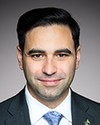Mr. Chair, I have just a couple points on that, because you'll recall that a few years ago the Auditor General did a study on our call centres and found us not to be providing the level of service that he was expecting and, frankly, that we would have liked. Since then, I would say, a couple of things have caused us to improve.
One is that we've put in more resources and we've increased training for our call centre agents to make sure we improve accuracy.
However, one of the big changes we've had is that we now have a new telephone platform. New technology has come in and has allowed us to do things differently from the way we did them before. For example, it used to be that if you called us, we didn't have the ability to tell you how long the wait was going to be, so we had a rule within the CRA that we were going to try to address your call within two minutes 80% of the time, and if we didn't feel as though we could do that, you got a busy signal and called back. Now what we're able to do with this new technology, which is obviously more modern, is to tell people up front, “Your expected wait time is five minutes” or 10 minutes or whatever it is, and then people can make a choice: “I'd like to hang on” or “No, I'll call back later.” Up front, people get that choice, and the rare, rare exception will get a busy signal. You'll always get that choice, and if you decide you don't want to wait, then you'll call back. We also have beefed up our self-service efforts, so people can, if they have a fairly simple question, actually deal with it without talking to an agent.



